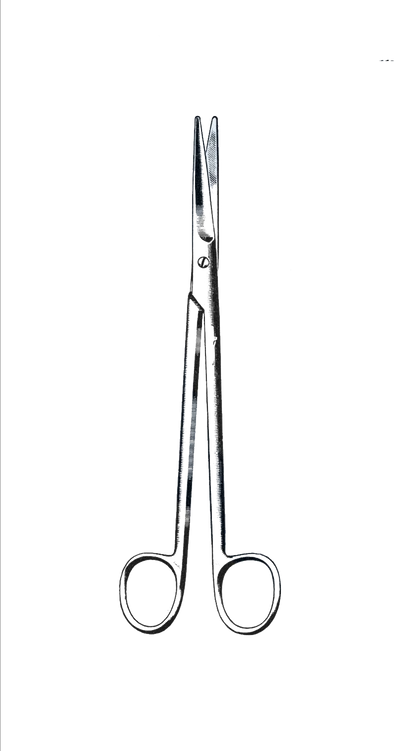
Delicate Dissecting Scissors
Delicate Dissecting Scissors are specialized surgical instruments designed for precise dissection and cutting of soft tissues in delicate procedures. These scissors are typically used in fields like plastic surgery, ophthalmology, ENT (ear, nose, and throat) surgery, and microsurgery, where high accuracy is crucial.
Key Features:
Fine, Sharp Blades: The blades are exceptionally sharp and finely tapered, allowing for clean, smooth cuts with minimal tissue trauma. This is essential in procedures involving sensitive or small structures.
Narrow, Pointed Tips: The tips of delicate dissecting scissors are usually pointed to provide better control and precision during dissection, enabling the surgeon to carefully separate tissues without causing damage.
Lightweight and Ergonomic: These scissors are designed to be lightweight, making them easier to control during long surgeries and reducing hand fatigue for the surgeon.
Variety of Shapes and Angles: Delicate dissecting scissors come in both straight and curved designs, with various angles, to reach difficult or confined spaces and to provide better access during intricate dissection.
Common Uses:
Plastic and Reconstructive Surgery: For dissection of soft tissue, skin, or fat during reconstructive surgeries, where precision and minimal damage are key.
Ophthalmic Surgery: Used to dissect delicate tissue around the eye, such as during cataract surgery or retinal procedures.
ENT Surgery: To carefully separate and dissect tissues in small or sensitive areas of the ear, nose, and throat.
Microsurgery: Essential in surgeries involving very small blood vessels, nerves, or tissues, where detailed and controlled dissection is necessary.
Types:
Iris Scissors: A common type of delicate dissecting scissors used in ophthalmic surgery, with very fine, curved blades for precise cutting around the eye.
Metzenbaum Scissors: Though more commonly used for soft tissue dissection, they can also be used for delicate dissection, particularly in plastic surgery.
Straight or Curved Dissecting Scissors: Both designs can be used based on the surgeon’s preference and the need for accessing specific angles in the surgical site.
Benefits:
Precision: The sharpness and fine tips of the scissors provide the accuracy needed for delicate procedures, reducing tissue damage.
Control: The ergonomic design allows for improved handling, making it easier to manipulate the scissors with precision in tight or intricate areas.
Minimal Trauma: The delicate nature of these scissors reduces the risk of unnecessary trauma to surrounding tissues, promoting faster healing.
Delicate dissecting scissors are vital for surgeons performing intricate work, ensuring that cuts are clean, controlled, and minimally invasive.


